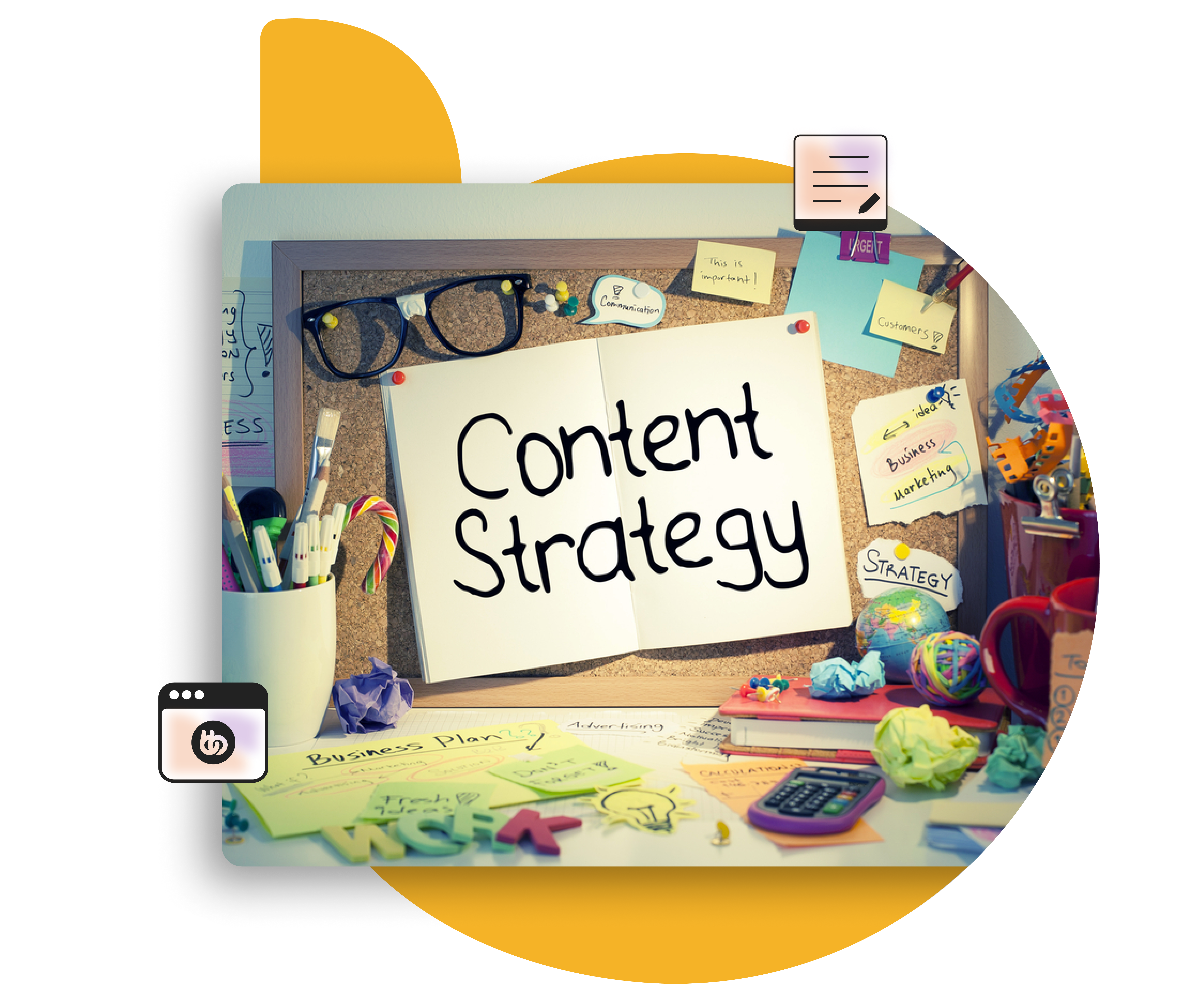BWhen you’re building a membership site or a subscription program, there is a lot to take on board.
From planning your membership offer, to building a solid and secure site platform, you might be feeling swamped.
But there is one thing that you can’t ignore: your site is nothing without people.
To entice members you need to build a buzz about your unique, not-available-elsewhere, quality content.
And the way to do that is with a good content marketing strategy.
Content marketing can do three important things for your membership site:
- Build a following
- Attract new members
- Retain existing members
You need a reliable content strategy framework, to guide you through the options and help you make some decisions.
So here it is. A detailed look at the world of content marketing: what you should create; how you should share it; and how to be patient enough to see the results of your hard work.
And, all the while, you need to keep an eye on maintaining a balance between content that is available for free alongside the wealth of information you can only get by subscribing.
What is content marketing – and do I need to be doing it?

Let’s start off with a couple of definitions…
“Content” – that describes the blogs, emails, whitepapers, videos, landing pages, social media posts or anything else that you create to help build out your site and get yourself known in the world.
“Content marketing” – that’s how you distribute that content to promote your site.
And yes, we realise that content marketing is sharing content to – essentially – sell content. It works – stick with us!
Here are a few facts about content marketing, that we know to be true:
- Membership and subscription sites are built on the premise that the owner is an expert. Content marketing helps to establish and solidify your credibility as an owner.
- Content marketing provides a reach that would not otherwise be possible. People sharing your content builds audience momentum and visibility.
- Content marketing drives traffic to your site. Any SEO expert will tell you that quality content is job number one if you are trying to boost your search rankings.
- People like interacting with a site that is providing interesting content. Content marketing helps you get relevant information in front of interested followers or potential members. It provides a baseline for being a trustworthy and useful source.
Yes. Yes, you need to be doing it!
Every membership or subscription site owner needs to plan how they will draw people to their site, have them sign up, and keep them coming back for more.
And a content marketing strategy is the way you get that whole process right.
Planning your content marketing means you create and share with purpose – and with a deliberate goal in mind.
In fact, here’s one more definition for you:
“Top of mind awareness” – that’s when your members, and potential members, think of your site first when they think of your particular specialism. That’s when you have got your content strategy just right: when you’re the leading voice.
Where do I start with content marketing?

To guide your thinking, you should answer a few helpful questions:
- What am I trying to achieve through my content strategy? (Hint: you probably want to entice, and retain, a target number of members per month)
- What steps do I need to take to reach that goal? (Hint: you might want to use SEO to drive traffic to your site, or collect email addresses so you can follow up)
- Who am I trying to reach? (Who are your target audience, and where can you find them?)
- What content does my audience want to see? (Hint: what are your competitors creating? And what are they failing to provide? You could ask your audience directly, via a survey or social post)
- When and how am I going to create and share my content? (Your content strategy needs to be continual – planned, scheduled, and year-round)
Once you’ve worked through that lot, you’ll be able to decide what kind of content you need – and want – to create.
You should play to your strengths: what can you create easily, and regularly, that your audience will value? The key will be consistency, and variety.
There is an amazingly comprehensive list of content formats here – but to break it down into categories, you should consider the following:
- Blog posts or articles, e.g. listicles or behind-the scenes teasers
- eBooks, white papers and case studies
- Templates, including downloads that your members can use to solve specific issues
- Infographics
- Videos, e.g. Facebook Lives, Q&As, promos, behind-the scenes
- Podcasts, e.g. interviews with experts
Let’s dive a little deeper into some of those, so you can consider what will work best for your site.
Content Type Breakdowns

Blog posts or articles. Ripe for SEO, your blogs should be ambassadors for your brand, your site and – well – you as the expert. Alongside using relevant keywords (use Google’s Keyword Planner to find out which are the most searched-for terms), your content should be engaging, brilliantly-written, and provide a direct answer to a given question. You can spend hours delving into the world of SEO, but those are the key elements to creating a blog post that does the hard work for you. How-to articles, listicles (“5 top ways to…”) and expert viewpoints are all good topics to consider. Link to articles and resources that are a natural next step – and which require a subscription.
eBooks, white papers and case studies. If you can show potential or existing members how useable and beneficial your membership site has already been to other members, then you will have them intrigued. Use your experience to share thought-prompts, industry insights and reference guides so that your audience gains something they really value. Then make sure they understand that there is much more like this when they become a member. All of these materials come with an added bonus that you can ask non-members for an email address, as the admission price for downloading your free resource.
Infographics. Use your expertise to explain an otherwise-complex subject in an impactful, visual way. You save time in creating the materials; your reader saves time in understanding the issue. Everyone wins. And if they want more information, or to connect with a community of their peers, then they can sign up as a member for real depth and breadth.
Videos. They come in all shapes and sizes. A Facebook Live is a video. A YouTube vlog is a video. A quick promo created on a smart, freely-available video creator tool is, of course, a video. All are endlessly shareable. Just make sure you have what it takes: appealing graphics, an engaging voice over or music, and of course subtitles so they are accessible to all. What you put in your videos is up to you: just make sure it’s something your potential members can’t get elsewhere. They’ll likely share it, and boost your audience. Want access to monthly Q&As with the experts featured in the video? Sign up to the membership site.
Podcasts. A podcast is another little ambassador for your site. You can reach audiences that don’t necessarily read longer articles or white papers, but who might really benefit from being part of a thriving community such as yours. Podcasts are huge – creating one shows you’re forward-thinking and have a broad reach. You can work with partners to sponsor your podcast, since listeners expect to hear adverts. Whilst you’re at it, spend a few minutes each time highlighting a different aspect of your site.

Did you see what we did? Each one of those content offerings came with an example of how to share something for free, and then to entice the potential member to engage further with the site.
Providing value for existing members, and enticing new members to subscribe.
Everything you do with content marketing is with one aim: driving membership volume.
Make your paid-for offering irresistible by demonstrating just how much better life is as a member.
Share and share alike

You’ll want to make sure you extract every single crumb of value out of each different piece of content. That means you need to do two things:
- Share widely; share often; entertain
- Reuse and recycle
Sharing your content is as important as any other part of your content strategy. You should build up followers on social media who are not only subscribers or potential members, but who are likely to share your content with other potential members. That means you need to be clever about what you post: spend your time creating content that is specific and targeted to your audience’s needs and anticipate what you can do to help them.
The “sharing” part of your content strategy should cover:
- Posting on your Facebook page; tagging and sharing on relevant groups; using Facebook ads where appropriate
- Sharing the link on Twitter with an attention-grabbing headline
- Creating an eye-catching story on Instagram
- Sharing your video on your YouTube channel
- Updating your LinkedIn page with the new content and a brief summary
- Emailing to your current and potential membership distribution lists (ensuring your messaging is consistent with the different audiences)
- Updating your free-to-access website with exciting blogs, articles and news
Just because you’ve created the content in one format, it doesn’t mean the work is done. How can you take that video and share it as an SEO-ready blog post? Can you interview the expert again, about a different topic, in your podcast? Which quotes and soundbites can you use to share on Twitter or Instagram?
You get the idea. One piece of content can stretch out across multiple formats to reach as many potential members as possible.
Even better, you can use content that you have already created for the members-only subscription.
If that doesn’t make sense, then that’s understandable – you can’t give away something others have to pay for, after all.
And while that’s true, you can entice members to sign up and access the rest by presenting, for free, a small chunk of the course.
That won’t diminish the value of being a member in any way – simply act as a call to action.
To conclude: content marketing just makes sense
Anyone with a membership site should be able to see the benefit of planning a comprehensive content strategy.
There are, certainly, many things to balance: free v paid content; spoken v written; downloads v SEO content.
It’s true that there are a lot of bases to cover.
But then again – being thoughtful about your unique offer, and being considerate of your members’ needs, means you are targeting the right people with resources that should move them from interested followers to active subscribers.
Don’t forget that an entire industry exists solely to create this content on your behalf.
If you don’t think you have the time or abilities to create what you need then you can always outsource.
Use analytics to track your success rates – if your followers are engaging more with a particular format, consider how you can adapt your plan to appeal in a similar way.
Remember that all of this takes time.
It’s an iterative process of finding out what works, repeating it, and waiting for members to come to you whilst you do your best to reach out to them in the right ways.
Ready to plan your content marketing strategy? Start answering those questions – and don’t forget to plan ahead, and reuse/repurpose what you have already created!












